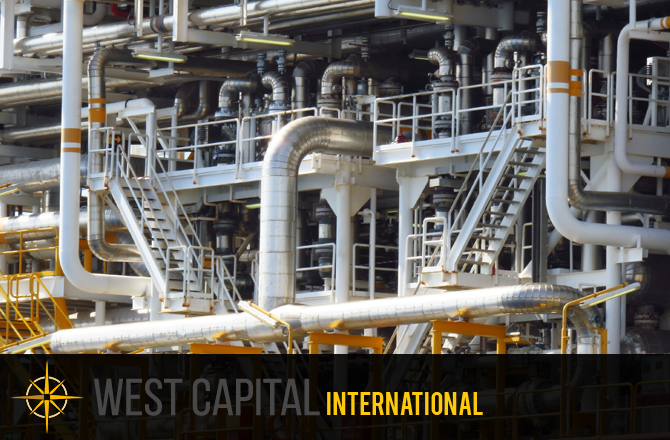West Capital International encourages clients to educate themselves about what affects their investments to aid them in making decisions about the recommendations presented to them, and to be more comfortable with occasional volatility in the markets. As previously discussed, the spot price of crude oil is a central determinant of many economic and investment related issues.
Oil prices are elastic. Price elasticity refers to how responsive a price is to changes in supply and demand. They are volatile in the short term because production and refining capacity are relatively fixed and take time to change. So, prices have to change to correct any imbalances in supply and demand. One could write an entire PhD dissertation on factors that impact the price of oil, but they can be summarized into 4 main categories:
1. Supply
2. Demand
3. Sentiment
4. $ USD
SUPPLY
Supply includes both producers and refineries. Producers extract crude oil from the ground. This includes oil wells, oil sands and fracking. Crude oil as it comes out of the ground is not particularly useful. Refineries are massive industrial plants that transform raw crude into useful petroleum products, including gasoline, jet fuel, and asphalt base, diesel and heating oil, among others. Hurricanes in the Gulf of Mexico have a large impact on oil prices because both production and refineries are affected.
Approximately 100 countries produce oil, although 48% of crude is produced in only 5 countries:
1. Russia 13%
2. Saudi Arabia 13%
3. USA 12%
4. Iraq 6%
5. Iran 5%
OPEC collectively holds 74% of proven reserves, and generates 43% of worldwide crude oil.
58% of the world’s oil refining capacity is concentrated in 10 countries. The 5 largest are the United States, China, Russia, Japan and India. Note that there are no Middle Eastern countries in that list. There is a balance of power of sorts internationally in the oil industry.
DEMAND
Economic growth has a major impact on the price of oil. This is a straight forward enough concept. Demand is also seasonal. There is an increase in the 4th quarter most years when cold weather increases heating demand and low inventories are replenished after the summer driving season. Severe cold weather will always affect demand. Green energy is a long way off from having the capacity to heat the world’s homes and businesses.
SENTIMENT
Several factors fall into this broad category that generate enthusiastic discussion among West Capital International analysts. Oil traders pay very close attention to geopolitical events, which can impact both the supply and the demand for oil. Most crude oil reserves lie in regions that are prone to instability. For example, current issues with Iran can affect both supply and demand. U.S. sanctions against Iran affect demand, and Iranian threats to block the Straits of Hormuz affect supply.
International trade relationships also have a tremendous impact on the price of oil, especially when they are in flux. These can generate economic ripple effects impacting demand.
The market for oil futures is a reflection of traders’ expectations about future supply and demand for crude, and equally reactive to the spot price of oil. Most of the activity in the futures market is for hedging purposes but speculators taking advantage of fluctuations for profit play their part in generating liquidity and contributing to price volatility.
THE U.S. DOLLAR
Crude oil has been priced in U.S. dollars since Nixon made a deal with the Saudis in 1974. Because oil is priced in $U.S. per barrel, there is a strong relationship between the two. It is an inverse correlation – the price of oil will move in the opposite direction of the $ U.S., with the dollar affecting the price of oil, not the other way around. The best forex relationship to follow for this purpose is the EUR/USD cross.The dollar trades within a range and once the direction of the range changes, then the trend line for oil will reverse. By contrast there are other currencies that are strongly affected by the price of oil, in particular the Canadian dollar (CAD), the Russian ruble (RUB) and the Brazilian real (BRL).


Recent Comments